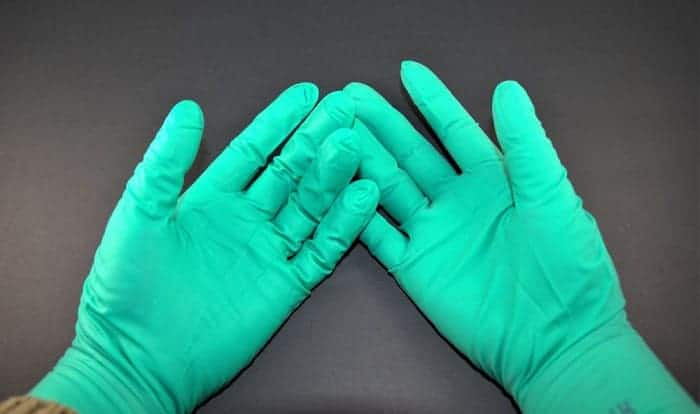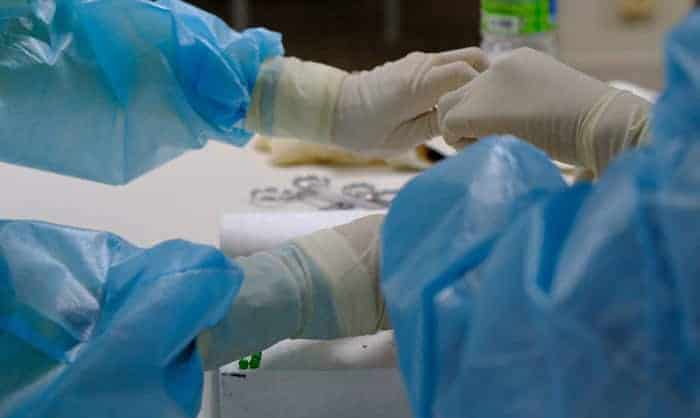It can be quite tricky to distinguish sterile gloves from non-sterile gloves since they do not have many differences in terms of looks. However, learning about their differences and applications can help you save money and make the most out of them.
If you must purchase disposable gloves for your organization or personal use, may it be a healthcare facility, production procedures, or simply a school project, don’t worry, we’ve got a very brief but comprehensive comparison of sterile vs non-sterile gloves here.
In this article, we will briefly explain the meaning of sterilization, compare the differences between sterile and nonsterile gloves in their applications, packaging, pricing, and production standards. Read below to learn more.
Table of Contents
What Does Sterile Mean
Sterilization and disinfection are popular terms in healthcare facilities. But don’t mistake one for another; they do not carry the same meaning. Something sterile is totally clean and free from all living microorganisms, such as a hospital room that has been prepped for surgery. Some popular sterilization techniques are dry heat, ethylene oxide, high-pressure saturated steam, and radiation.
On the other hand, disinfection is the process of cleaning something using liquid chemicals to kill bacteria and other organisms. In short, if you see a product labeled as partially sterile, that means it has gone through disinfection, not sterilization.
How Does the FDA Verify Sterile Products
Before selling and labeling a product as sterile, firstly, manufacturers must prove they have a sterile technique that meets the FDA standards. Then, they will have to perform sterilization testing procedures accordingly. The test requirements depend on multiple factors, such as the production materials and incubation conditions. These testing procedures are rigorous and meticulous, especially for medical-related products.
Sterile vs Non-Sterile Gloves: Differences
As said in the names, the main difference between sterile and nonsterile gloves is sterilization. Sterile gloves definition are gloves that have undergone a sterilization process under FDA standards with ethylene oxide or radiation and are free from all kinds of bacteria.
On the other hand, non-sterile, meaning examination gloves that haven’t been sterilized by manufacturers. They are used only as a physical barrier to prevent any pathogen from transmitting between individuals. Besides that, there are other differences between the two:
- Acceptable quality level: The FDA standard of acceptable quality level (also known as AQL) for sterilized gloves is 1.0 to 1.5, which means 1% to 1.5% of sterilized gloves on the market might have pinholes. Meanwhile, AQL for a non-sterile glove is 1.5 to 2.5, which means up to 2.5% of medical gloves on the market might have pinholes. In other words, during production and final product examination, sterilized gloves undergo stricter standards compared to non-sterile ones.
- Packaging: While it’s not necessary for non-sterile gloves, sterile or surgical gloves must come in individually wrapped packing. Also, it requires particular skills to open the package, put on, and remove sterile gloves properly. For further information, you can refer to this video about Sterile gloving nursing technique steps.
- Pricing: Due to stricter manufacturing processes and complicated sterilization techniques, sterile gloves are a lot more expensive than non-sterile gloves. Normally, a box of 25 pairs of surgical gloves is sold for about $26, while a box of 100 pairs of non-sterile gloves is around $4 only.
Sterile Gloves vs Non-sterile: Applications
The main use of sterile gloves are for invasive surgical procedures and operations to keep hand hygiene and prevent surgical site infections. Here is a list of situations where they are required:
- Performing invasive surgical procedures
- Delivering babies
- Handling sterile equipment in surgical rooms
- Changing dressings for surgical wounds
- Performing dialysis
However, sterile gloves are not always necessary. Non-sterile gloves have many applications not only in non-invasive medical procedures but also in factories or chemical handling processes.
They are effective in protecting workers against oily substances, acid, and other liquids. Also, they are very helpful in food factories where bacteria transferring needs to be strictly kept to a minimum. Here is a list of common applications of these gloves:
- Giving an injection
- Performing dental procedures
- Performing medical examinations
- Performing non-surgical procedures
- Dressing a wound by secondary intention
- Preparing ready-to-eat food in restaurants
- Handling materials in factories
- Avoiding direct exposure to chemicals in labs
Both types of gloves come in a variety of materials, such as latex, vinyl, or nitrile. Nitrile gloves are the best option when it comes to preventing allergic reactions to natural rubber. Vinyl gloves are cost-effective but face a higher risk of being punctured or torn because vinyl is less elastic. If you have a latex allergy or are looking for replacements, remember there are always other options.
Conclusion
In conclusion, both types of gloves have their places in medical procedures, food productions, chemical factories, and patient care. Learning about their differences can help guarantee their maximum potential.
If you found our article on sterile vs non-sterile gloves comparison helpful, don’t hesitate to share it with others. Also, leave your thoughts in the comment section. We look forward to hearing from you.

Having worked in the field of personal protective equipment for over two decades, Andrew Carnegie is a specialist in the field.
At EDC, he strives to improve performance efficiency and promote workplace safety for EDC’s readers and customers. He also researches the most up-to-date equipment that has earned relevant accreditation for use in a wide range of industries and specialties.




